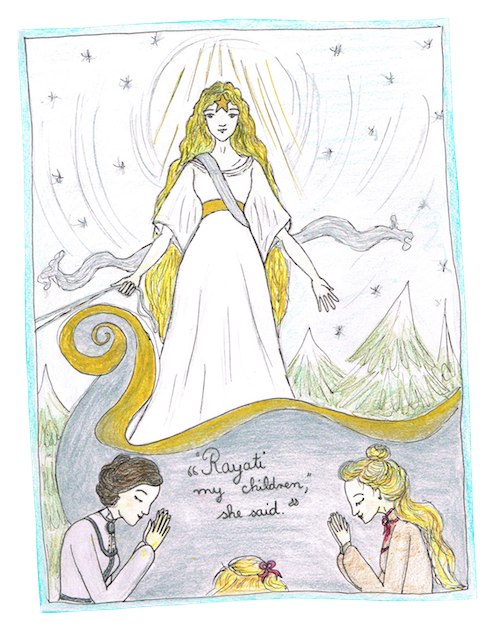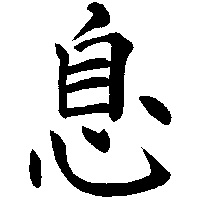
Blessed Nativity





 This heartwarming seasonal story has become a tradition among devotees of Our Mother God. This year it is newly illustrated and as lovely as ever.
This heartwarming seasonal story has become a tradition among devotees of Our Mother God. This year it is newly illustrated and as lovely as ever.  This heartwarming seasonal story has become a tradition among devotees of Our Mother God. This year it is newly illustrated and as lovely as ever.
This heartwarming seasonal story has become a tradition among devotees of Our Mother God. This year it is newly illustrated and as lovely as ever. 

 we have talked about often.
Breath is also the breath of spirit. The very word “spirit” is the same word as the Latin for breath (which is why we have re-spir-ation). In Greek pneuma means breath and Spirit, in Sanskrit atma means the same two things, as does ruach in Hebrew.
The sun is of course connected with the rhythms of manifestation – day and night, the seasons. The heart, while it is Solar, does not carry this direct symbolism. The breath, on the other hand does. In fact when we talk of seasonality and time we use the breath as the extreme signifier – that is, it represents the smallest rhythm (a single in-and-out breath) and the greatest (the outbreathing and inbreathing of the cosmos by the Dark Mother at the beginning and end of time).
Breath is less world-like than heartbeat. Heartbeat stops at death while breath-spirit is pictured as leaving the body but continuing (“giving up the ghost” – and remember that “ghost” also means spirit originally – cf German Geist and older English usages like “the Holy Ghost”).
Sanskrit, being closer to primordial language than the Classical or Semitic languages contains an additional meaning to the word atma. It also means self. And it means self in both senses – the Supreme Self – Divinity, and the small personal self (atma and jivatma). Words derived from atma are used to mean “myself” in Sanskrit-derived languages (such as Hindi) to this day.
Thus breath is the self-heart the center-symbol that directly symbolizes the duality/oneness of Supreme self and “mere self” as beautifully expressed in this kanji.
we have talked about often.
Breath is also the breath of spirit. The very word “spirit” is the same word as the Latin for breath (which is why we have re-spir-ation). In Greek pneuma means breath and Spirit, in Sanskrit atma means the same two things, as does ruach in Hebrew.
The sun is of course connected with the rhythms of manifestation – day and night, the seasons. The heart, while it is Solar, does not carry this direct symbolism. The breath, on the other hand does. In fact when we talk of seasonality and time we use the breath as the extreme signifier – that is, it represents the smallest rhythm (a single in-and-out breath) and the greatest (the outbreathing and inbreathing of the cosmos by the Dark Mother at the beginning and end of time).
Breath is less world-like than heartbeat. Heartbeat stops at death while breath-spirit is pictured as leaving the body but continuing (“giving up the ghost” – and remember that “ghost” also means spirit originally – cf German Geist and older English usages like “the Holy Ghost”).
Sanskrit, being closer to primordial language than the Classical or Semitic languages contains an additional meaning to the word atma. It also means self. And it means self in both senses – the Supreme Self – Divinity, and the small personal self (atma and jivatma). Words derived from atma are used to mean “myself” in Sanskrit-derived languages (such as Hindi) to this day.
Thus breath is the self-heart the center-symbol that directly symbolizes the duality/oneness of Supreme self and “mere self” as beautifully expressed in this kanji.  we have talked about often.
Breath is also the breath of spirit. The very word “spirit” is the same word as the Latin for breath (which is why we have re-spir-ation). In Greek pneuma means breath and Spirit, in Sanskrit atma means the same two things, as does ruach in Hebrew.
The sun is of course connected with the rhythms of manifestation – day and night, the seasons. The heart, while it is Solar, does not carry this direct symbolism. The breath, on the other hand does. In fact when we talk of seasonality and time we use the breath as the extreme signifier – that is, it represents the smallest rhythm (a single in-and-out breath) and the greatest (the outbreathing and inbreathing of the cosmos by the Dark Mother at the beginning and end of time).
Breath is less world-like than heartbeat. Heartbeat stops at death while breath-spirit is pictured as leaving the body but continuing (“giving up the ghost” – and remember that “ghost” also means spirit originally – cf German Geist and older English usages like “the Holy Ghost”).
Sanskrit, being closer to primordial language than the Classical or Semitic languages contains an additional meaning to the word atma. It also means self. And it means self in both senses – the Supreme Self – Divinity, and the small personal self (atma and jivatma). Words derived from atma are used to mean “myself” in Sanskrit-derived languages (such as Hindi) to this day.
Thus breath is the self-heart the center-symbol that directly symbolizes the duality/oneness of Supreme self and “mere self” as beautifully expressed in this kanji.
we have talked about often.
Breath is also the breath of spirit. The very word “spirit” is the same word as the Latin for breath (which is why we have re-spir-ation). In Greek pneuma means breath and Spirit, in Sanskrit atma means the same two things, as does ruach in Hebrew.
The sun is of course connected with the rhythms of manifestation – day and night, the seasons. The heart, while it is Solar, does not carry this direct symbolism. The breath, on the other hand does. In fact when we talk of seasonality and time we use the breath as the extreme signifier – that is, it represents the smallest rhythm (a single in-and-out breath) and the greatest (the outbreathing and inbreathing of the cosmos by the Dark Mother at the beginning and end of time).
Breath is less world-like than heartbeat. Heartbeat stops at death while breath-spirit is pictured as leaving the body but continuing (“giving up the ghost” – and remember that “ghost” also means spirit originally – cf German Geist and older English usages like “the Holy Ghost”).
Sanskrit, being closer to primordial language than the Classical or Semitic languages contains an additional meaning to the word atma. It also means self. And it means self in both senses – the Supreme Self – Divinity, and the small personal self (atma and jivatma). Words derived from atma are used to mean “myself” in Sanskrit-derived languages (such as Hindi) to this day.
Thus breath is the self-heart the center-symbol that directly symbolizes the duality/oneness of Supreme self and “mere self” as beautifully expressed in this kanji. 

VIDEO WITH AUTHOR PAMELA WELLS AND LECTURER LESLIE ZEHR (Video)
Author and lecturer Leslie Zehr interviewed Pamela Wells author and illustrator of “Affirmations for the Everyday Goddess” on ‘Contemplating the Universe’. The program was recorded live from Cairo, Egypt and San Diego, CA in the USA.
ABOUT THE ARTIST AND AUTHOR PAMELA WELLS
I have been working as an artist, author and consultant specializing in creative work that leads to greater consciousness.In the commercial art field, I authored and illustrated a Collectors Edition guidebook and card set for understanding mystical wisdom titled “Affirmations for the Everyday Goddess Spiritual Guidebook & 22 Wisdom Cards for Contemplation and Prayer”. It is available for retail or wholesale from ArtmagicPublishing.com, New Leaf Distribution, Barnes & Noble, Amazon or DeVorss & Company. It is also available at iTunes as an iPhone app (or through ConsciousnessApps.com).My blog has many articles about feminine spiritual empowerment.
For those who want to know more about their own life purpose and soul’s work, I offer Sacred Contact readings. For more information about a Sacred Contract reading, visit me here, at this site, at the Sacred Contract page link.
EDUCATION: Watts Atelier of the Arts, Boston University and George Washington University, Bachelor of Business Degree.
EXPERIENCE: Technical illustrator for advertising, health care and computer companies. Graphics and web designer for holistic businesses. Author, artist and publisher of “Affirmations for the Everyday Goddess”. Sacred Contract consultant and fine artist.